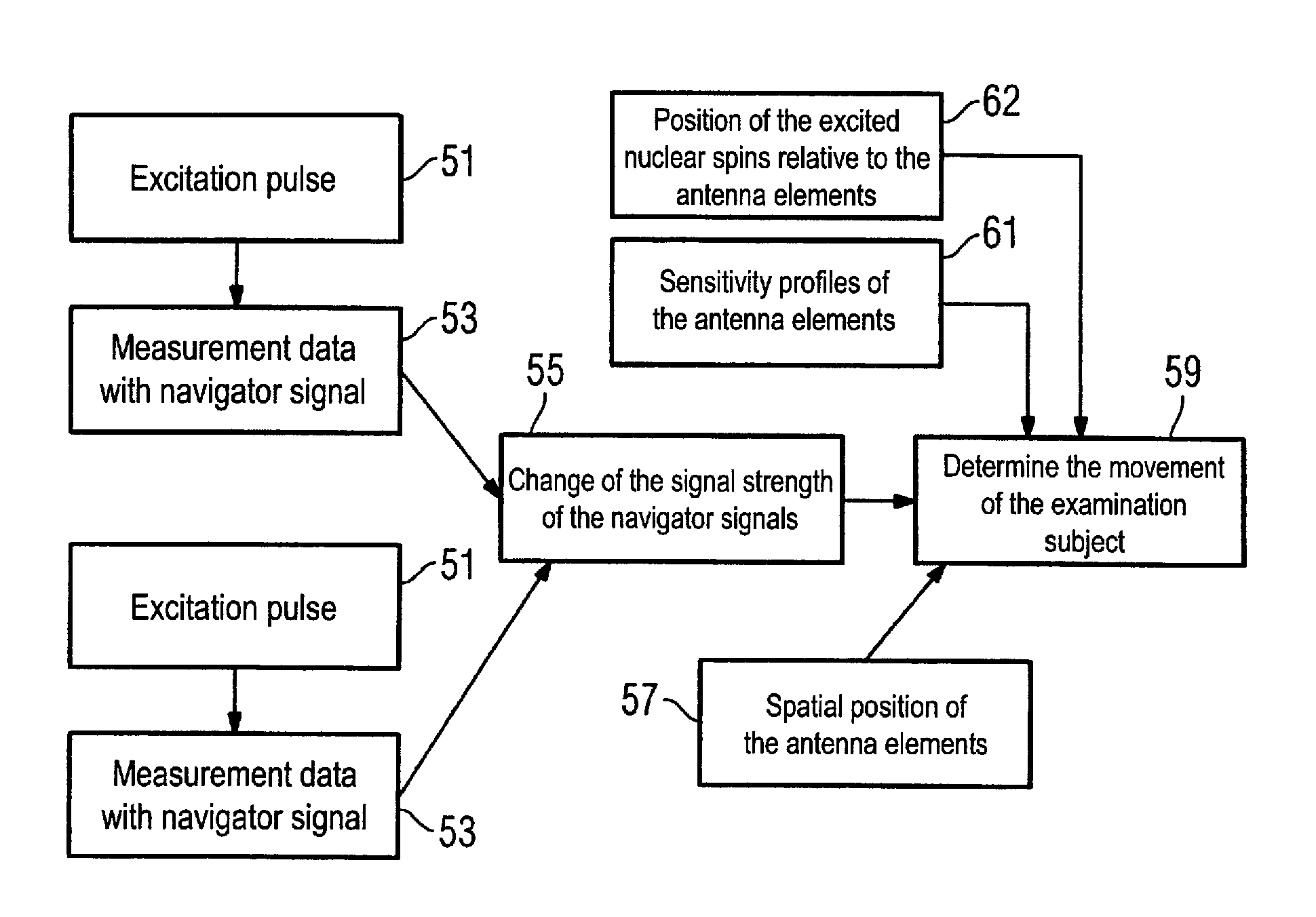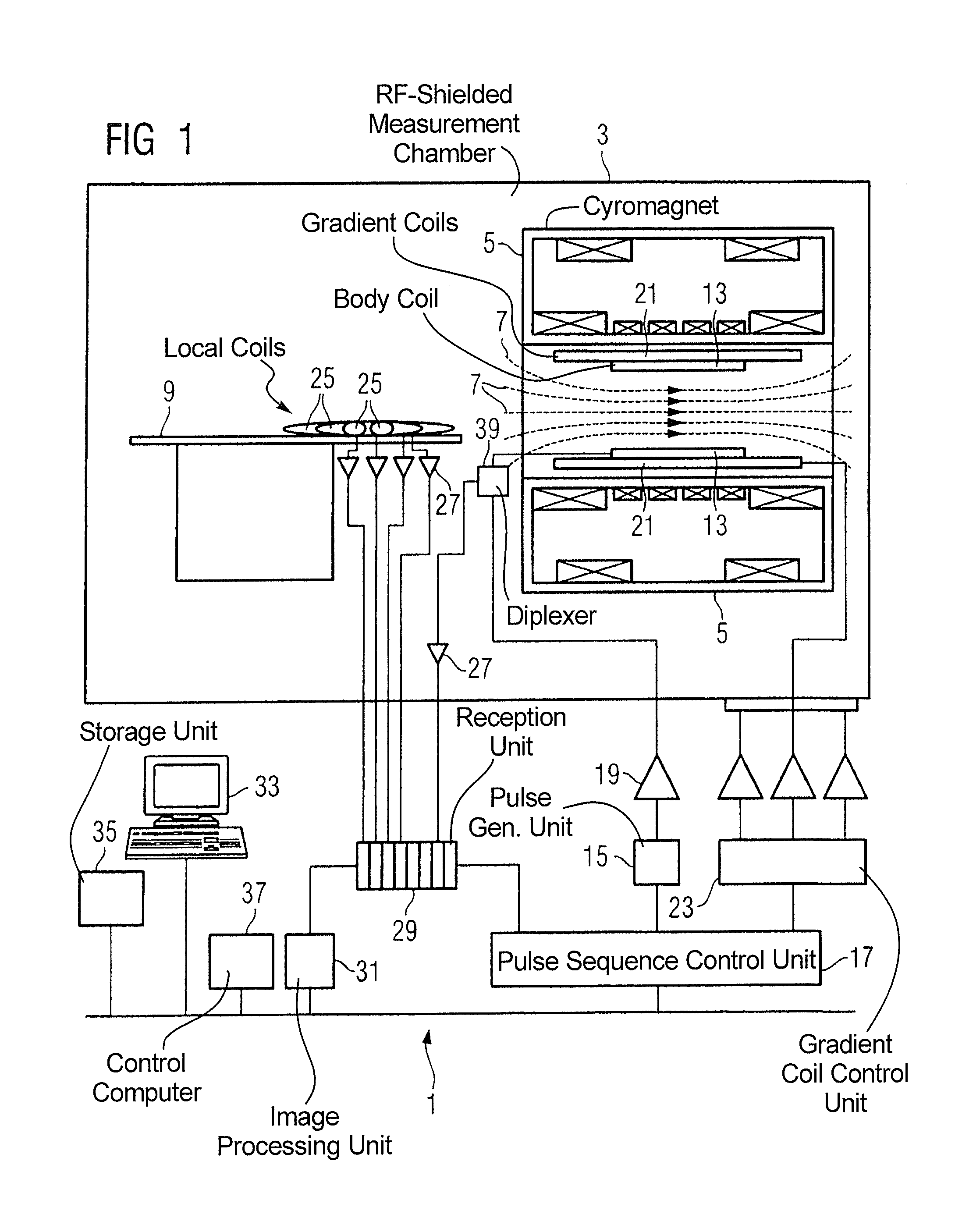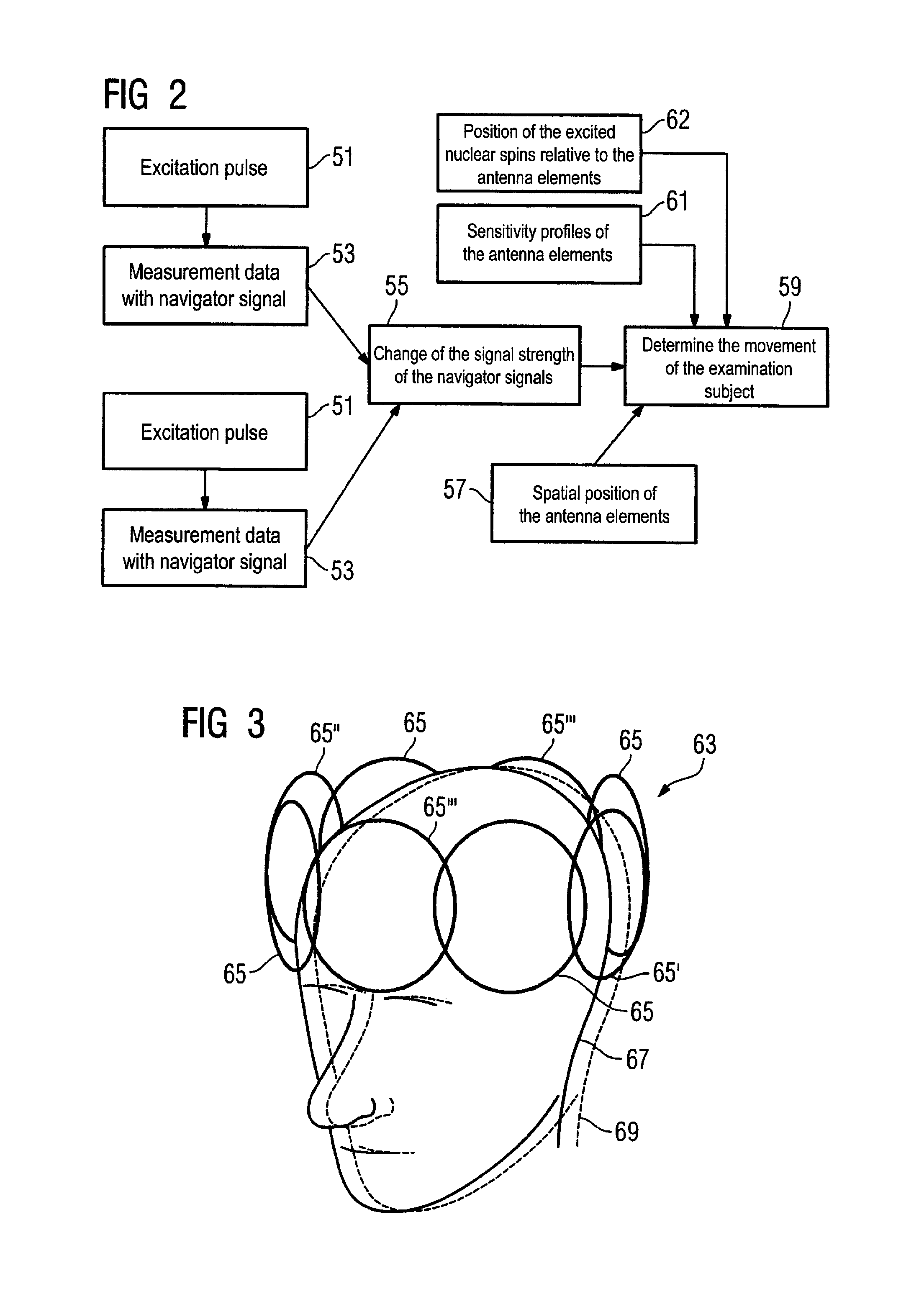Method and magnetic resonance apparatus for determination of patient movement during data acquisition
a technology of magnetic resonance apparatus and data acquisition, which is applied in the field of method and magnetic resonance apparatus for determining the movement of patients during data acquisition, can solve the problems of high cost expenditure and significant image quality limitations, and achieve the effects of less measurement and calculation time, and increased measurement and calculation tim
- Summary
- Abstract
- Description
- Claims
- Application Information
AI Technical Summary
Benefits of technology
Problems solved by technology
Method used
Image
Examples
Embodiment Construction
[0031]FIG. 1 schematically shows the basic components of a magnetic resonance apparatus 1. In order to examine a body by means of magnetic resonance imaging, various magnetic fields matched as precisely as possible with one another in terms of their temporal and spatial characteristics are applied.
[0032]A strong magnet (typically a cryomagnet 5 with a tunnel-shaped opening) arranged in a radio-frequency-shielded measurement chamber 3 generates a static, strong basic magnetic field 7 that is typically 0.2 Tesla to 3 Tesla and more. A body or a body pat to be examined (not shown here) is supported on a patient bed 9 and positioned in a homogeneous region of the basic magnetic field 7.
[0033]The excitation of the nuclear spins of the body ensues by radio-frequency excitation pulses that are radiated from a radio-frequency antenna (shown here as a body coil 13). The electrical signals representing radio-frequency excitation pulses are generated by a pulse generation unit 15 that is contr...
PUM
 Login to View More
Login to View More Abstract
Description
Claims
Application Information
 Login to View More
Login to View More - R&D
- Intellectual Property
- Life Sciences
- Materials
- Tech Scout
- Unparalleled Data Quality
- Higher Quality Content
- 60% Fewer Hallucinations
Browse by: Latest US Patents, China's latest patents, Technical Efficacy Thesaurus, Application Domain, Technology Topic, Popular Technical Reports.
© 2025 PatSnap. All rights reserved.Legal|Privacy policy|Modern Slavery Act Transparency Statement|Sitemap|About US| Contact US: help@patsnap.com



